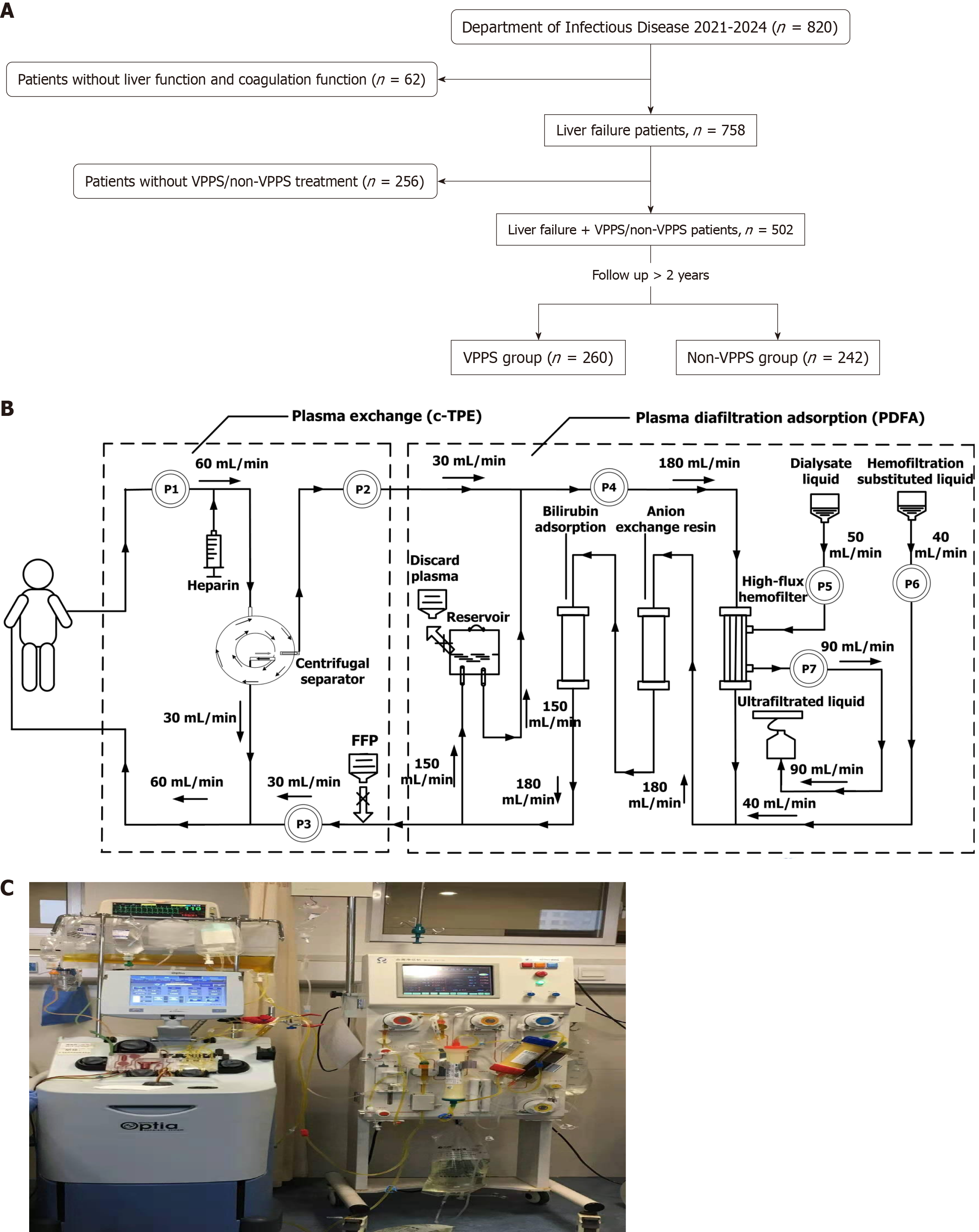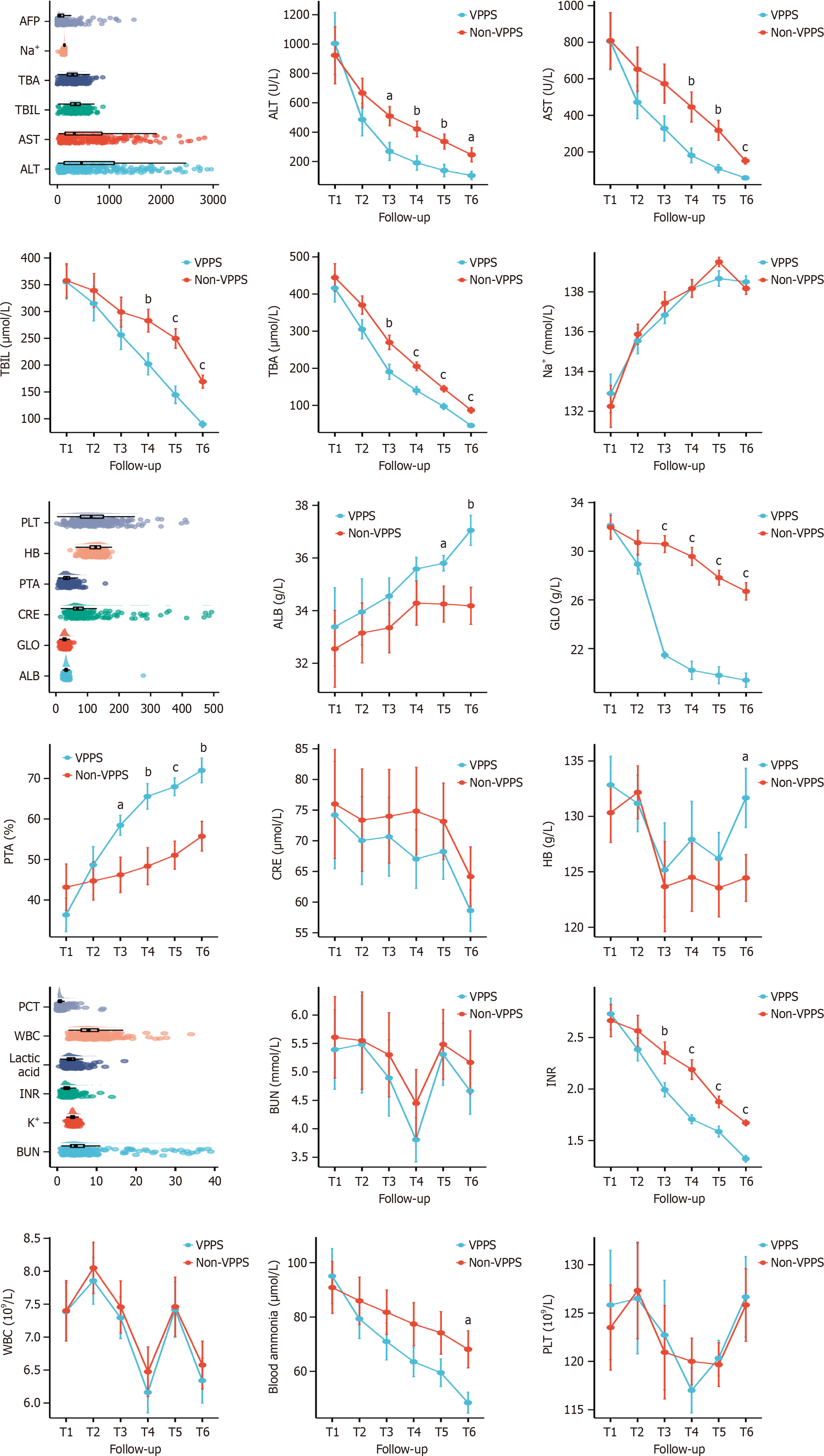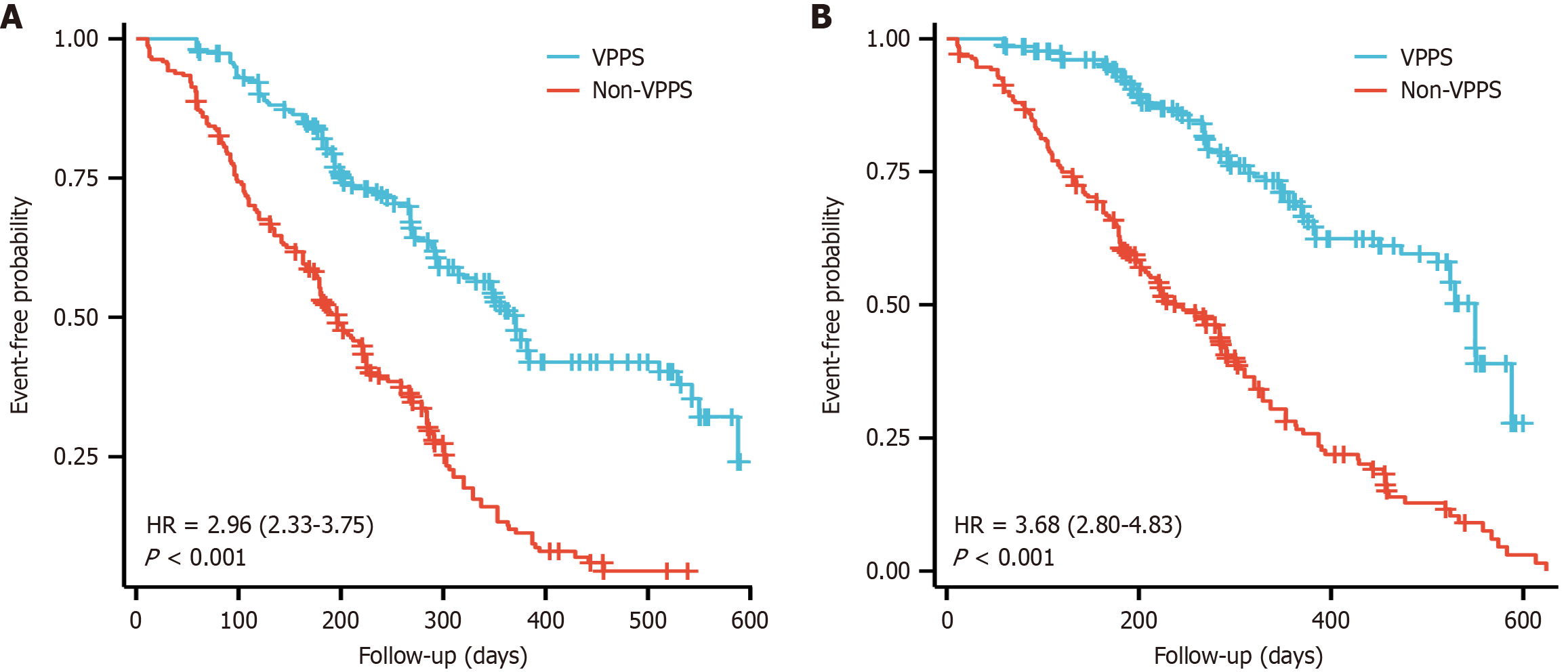Copyright
©The Author(s) 2025.
World J Gastroenterol. Apr 14, 2025; 31(14): 103892
Published online Apr 14, 2025. doi: 10.3748/wjg.v31.i14.103892
Published online Apr 14, 2025. doi: 10.3748/wjg.v31.i14.103892
Figure 1 Flow diagram.
A: Flow chart; B: Schematic of versatile plasma purification system (VPPS) treatment; C: VPPS treatment was performed by combining a blood separation system and hemodialysis unit. VPPS: Versatile plasma purification system.
Figure 2 Changes in laboratory results between versatile plasma purification system and non-versatile plasma purification system groups.
The laboratory results were evaluated at six distinct time points: T1: Upon admission; T2-T5: Prior to and following artificial liver support treatment; T6: Immediately before discharge. aP < 0.05; bP < 0.01; and cP < 0.001 compared with the control group; ALS: Artificial liver support; VPPS: Versatile plasma purification system; ALT: Glutamic-pyruvic transaminase; AST: Glutamic oxaloacetic transaminase; TBIL: Total bilirubin; TBA: Total bile acid; AFP: Alpha-fetoprotein; ALB: Albumin; GLO: Globulin; CRE: Creatinine; PTA: Prothrombin activity; HB: Hemoglobin; PLT: Platelet; BUN: Blood urea nitrogen; INR: International normalized ratio; WBC: White blood cell; PCT: Procalcitonin.
Figure 3 Kaplan-Meier curves for time to rehospitalization, and all-cause mortality in patients with versatile plasma purification system and non-versatile plasma purification system groups during the years of follow-up.
A: Kaplan-Meier curves for time to rehospitalization; B: All-cause mortality. VPPS: Versatile plasma purification system.
- Citation: Dai ZS, Zhang M, Deng YY, Zhou N, Tian Y. Efficacy of a novel artificial liver versatile plasma purification system in patients with acute-on-chronic liver failure. World J Gastroenterol 2025; 31(14): 103892
- URL: https://www.wjgnet.com/1007-9327/full/v31/i14/103892.htm
- DOI: https://dx.doi.org/10.3748/wjg.v31.i14.103892











